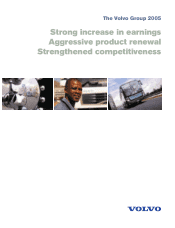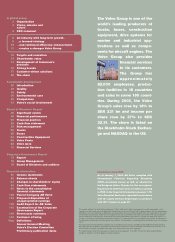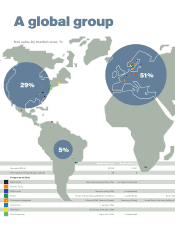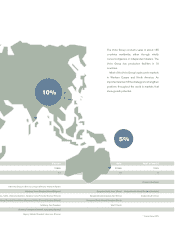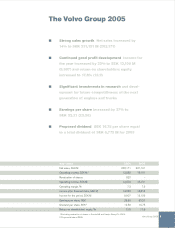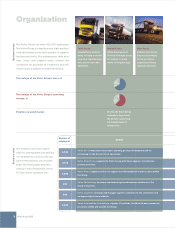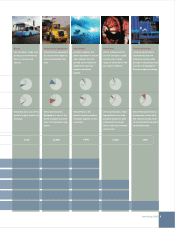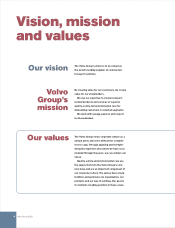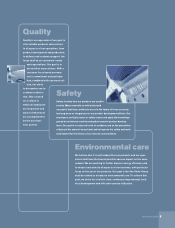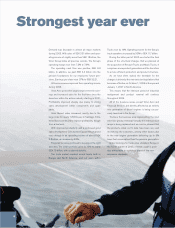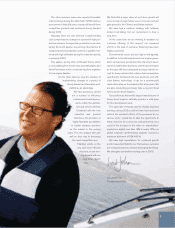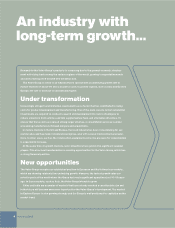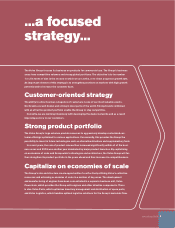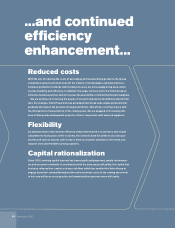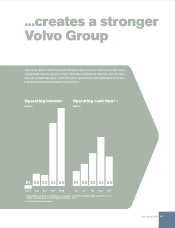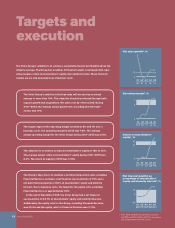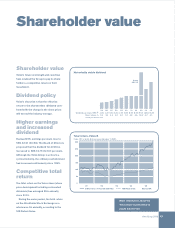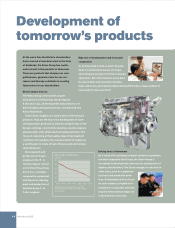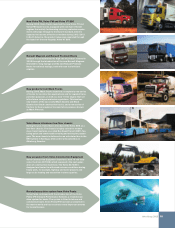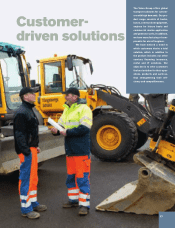Volvo 2005 Annual Report Download - page 11
Download and view the complete annual report
Please find page 11 of the 2005 Volvo annual report below. You can navigate through the pages in the report by either clicking on the pages listed below, or by using the keyword search tool below to find specific information within the annual report.
The other business areas also reported favorable
order bookings during the latter half of 2005 and our
assessment is that all business areas will bene fit from
competitive products and continued strong demand
during 2006.
Naturally, there are risks inherent in implementing
such comprehensive changes in a period of high pro-
duction volumes. As expected, production costs rose
during the fourth quarter, due among other factors to
using old and new production systems in parallel com-
bined with high utilization during the transition period,
in primarily 2006.
This applies, among other, to Renault Trucks, which
is consolidating from three to two assembly plants, and
Volvo Powertrain, which is transitioning from eighteen
to two engine families.
On the other hand, we view the situation of
implementing changes in a period of
strong demand and favorable prof-
itability as an advantage.
We have previously carried
out a number of efficiency
enhancements and improve-
ments within the distribu-
tion and service network.
Combined with the new
industrial and product
structures, this provides us
highly favorable possibilities
to further advance pos itions
on the market in the coming
years. The new product lines are
well on their way to becoming
the most competitive ever.
Standing solidly on the
new and more efficient
structure, we are mov-
ing forward with our
long-term object-
ives.
We think that a major share of our future growth will
occur in Asia. A major future issue is how we can best
gain ground in the Chinese and Indian markets.
We have had a cautious strategy, with relatively
modest risk-taking, but our involvement in Asia is
long term.
At the same time we are working to broaden our
customer offering. In this respect, our increased
efforts in the area of customer financing have been
highly successful.
Environmental issues are also high on the agenda.
In addition to the aforementioned new engine gener-
ation, we have also accelerated the intensity in devel-
opment of alternative drivelines, with the diesel engine
as the base. We have developed a unique hybrid con-
cept for heavy vehicles that reduces fuel consumption
significantly. Combined with new and more cost-effi-
cient battery technology, it can be a commercially
viable alternative on the market within a few years. We
are also conducting promising trials using non-fossil
fuel to power diesel engines.
Our position as the world’s largest manufacturer of
heavy diesel engines naturally provides a solid base
for this development work.
The rapid rate of change and the sharply improved
earnings during 2005 could not have been achieved
without the excellent efforts of the personnel at our
various units. I would like to take the opportunity to
thank everyone for a work very well performed. As a
result of the increase in the return on shareholders’
equity from slightly less than 14% to nearly 18%, our
global employee profit-sharing program received a
maximum allotment of SEK 450 M.
We have high expectations for continued growth
and increased profitability over the business cycle and
are looking forward to continue developing the Group.
We anticipate yet another exciting year in 2006.
Leif Johansson
President and CEO
7

